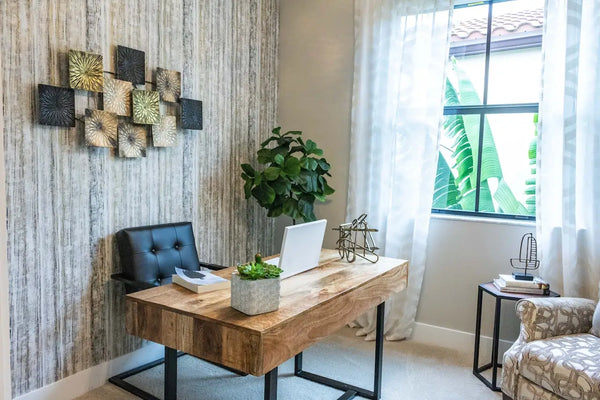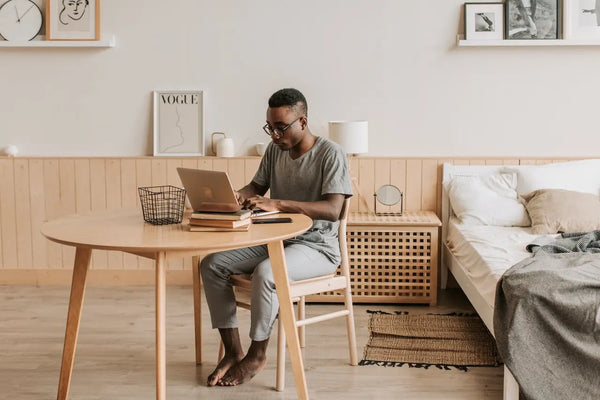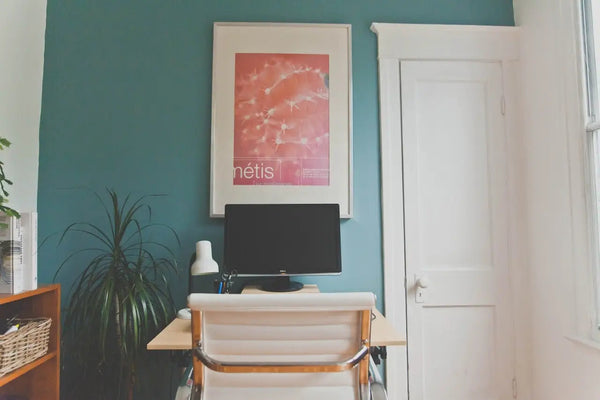Tips for setting up your own home office
Once seen as a luxury, having an office space at home is becoming increasingly common, whereby working remotely is a feasible option for an increasing number of employees. Whether you work a few mornings or work 50 hours a week from home, creating the right environment is very important to keep yourself healthy, happy and productive.
If you think about furnishing your own home office, or are looking for inspiration for renewing your current workspace, then here are 6 quick tips for designing a home office that works.

Be inspired, but stay realistic
Searching for inspiration is a great way to get ideas, but don't lose sight of the end goal. That beautiful vintage agency that you saw on Pinterest may look fantastic, but does it also offer space for your project work? And that graceful cupboard may fit that in your dining room, but is it really practical for regular use?
Find inspiration, but try to find furniture and accessories that do not hinder your work, or become increasingly uncomfortable as the day gets older. Search for practical furniture that does what it has to do - so that you feel comfortable and productive.

Ensure sufficient storage space
Although computers dominate the written work, you will most likely still have a lot of paperwork, so sufficient storage space is important to prevent your home office from becoming messy. A standard archive cabinet can feel ugly, so look for alternatives.
If you are dependent on visual memories to perform tasks, look at options for wall storage that keep things in sight, such as pin or chalkboards or magazine racks. If you need bookcases, make sure they are large enough to prevent them from becoming too full, and being attractive if you have a visit or have to use as a background for conference interviews.
Whatever you decide, make sure you have enough room to keep everything tidy and tidy and not to transfer to the rest of the room.
Think ergonomic
Understanding the mechanics of the body and the importance of sitting correctly can help prevent the most common causes of back pain and work -related disorders.
Chances are that your most used office tool is your computer, so creating a space to offer space should be an important consideration. The top of your monitor must be at eye level or slightly lower and your forearms must be parallel to the floor in the typing position. Feet must rest firmly on the floor, or on the foot benches of the chair.
If you make many hours, you must also look for a comfortable and reliable office chair. One that offers high ergonomic qualities, comfort and durability, preferably with a long warranty. There are many style options that match your interior design.provide enough light






